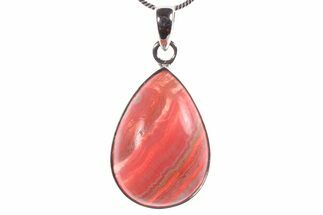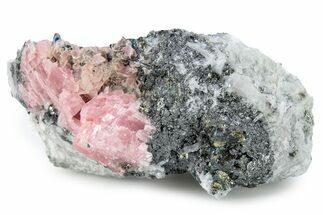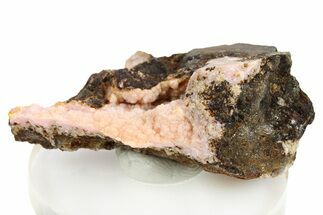RHODOCHROSITE FOR SALE
Rhodochrosite is a manganese carbonate mineral that ranges in color from light pink to bright red. It is found in a small number of locations worldwide where other manganese minerals are usually present. It is most often found as a stalactite/stalagmite formation, however it does form individual crystals that are rhombohedral and scalenohedral in shape. Rhodochrosite earned its name after the Greek word for "rose colored".
34 Items
($19 to $45)
 Reviews
Reviews

































